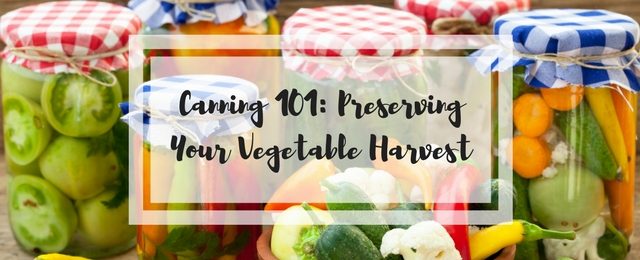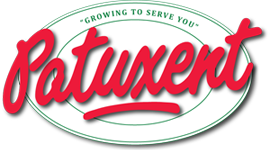
Canning 101: Preserving Your Vegetable Harvest
Ever wanted a taste of summer when it’s freezing outside? Want to make the best use of herbs? Want to learn a brand new skill?
3 Main Steps to Canning
Sanitizing Your Jars
There are 3 main steps to canning: sanitizing, preparation and sealing the jars. First, it’s important to sanitize the glass jars that you’ll be using. The easiest way is to set the jars and the lids in the dishwasher on the sanitize cycle. The other way to sanitize them is to put them in a large container on the stove, and cover the jars by at least an inch of water. Bring this to a rolling boil for at least 10 minutes.
Once the time is up, the jars can be removed but should only be placed on a clean paper towel to prevent contamination. Canning kits can come in handy here because they have rubber tongs fitted to easily lift the hot glass jars out of the boiling water.
Preparation
Next, you need to prepare your mixture. This can be anything from a recipe for dill pickles to a fruit jam or a fresh tomato salsa. Usually, this means cooking the mixture on the stove, sometimes, in the case of jellies or jams, you have to use pectin to form a more solid mixture. Pectin is a naturally occurring substance found usually in most fruits, and is usually extracted from fruit to form a liquid or powder that can be mixed with sugar and added to a jam to cause it to thicken or gel.
Pectin usually comes in small jars, and the amount that you use depends on the amount of product that you’re using. The jars of pectin come with a small label that show the ratios of pectin to fruit/product and how much sugar should be added to make the pectin effective. There is also pectin in which you don’t have to add any sugar, and this is best for thickening sauces that don’t need to be sweet.
Sealing the Jars
After pouring the mixture into the sanitized jars, place the lids on and tighten them. Then, you have two options for sealing the jars: water bath or pressure cooking. The pressure cooker is simpler but more expensive as it only requires putting the jars into the machine, setting it and walking away. Once the machine is done, the jars are sealed.
On the other hand, a water bath is the cheaper, faster method that can handle high acid foods like berry jam or salsa or pickles. A water bath is about as easy as it sounds: place the sealed jars into a large pot of water with at least an inch of water above the jar. Bring the pot of water to a rolling boil for about 10 minutes, then remove the jars from the water bath and let them cool. At this point, the jars are completely sealed and set for at least a year, if not longer. However, you’re welcome to open and eat them as soon as you want!
Additional Resources
For more detailed instructions, try to stop by our class “Canning 101: What to do with your vegetable harvest?” on July 30 at 11 AM.
For more online references, check out Ball’s Canning Basics.



